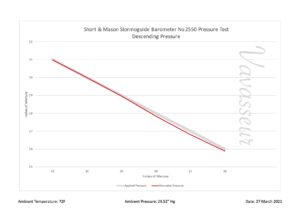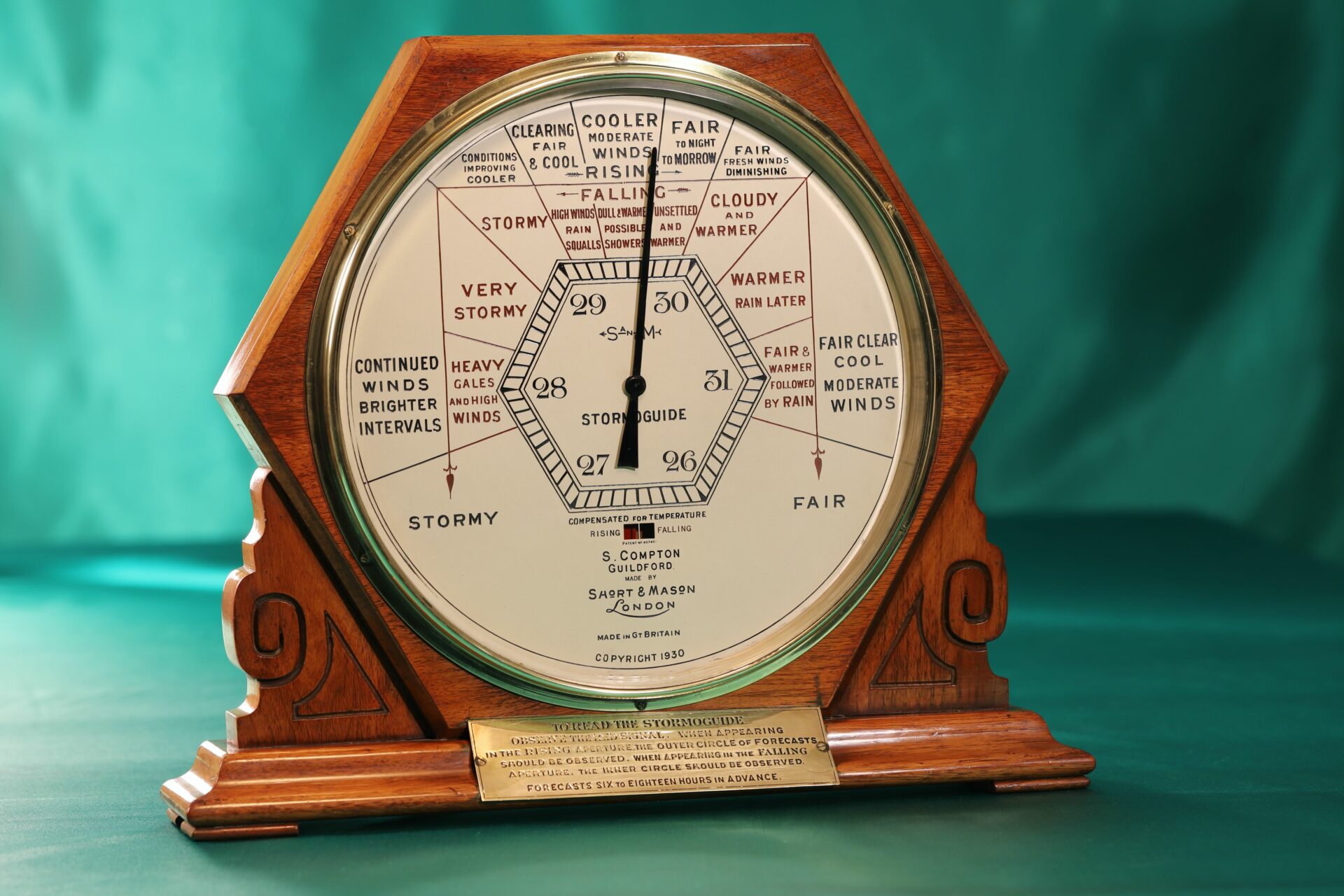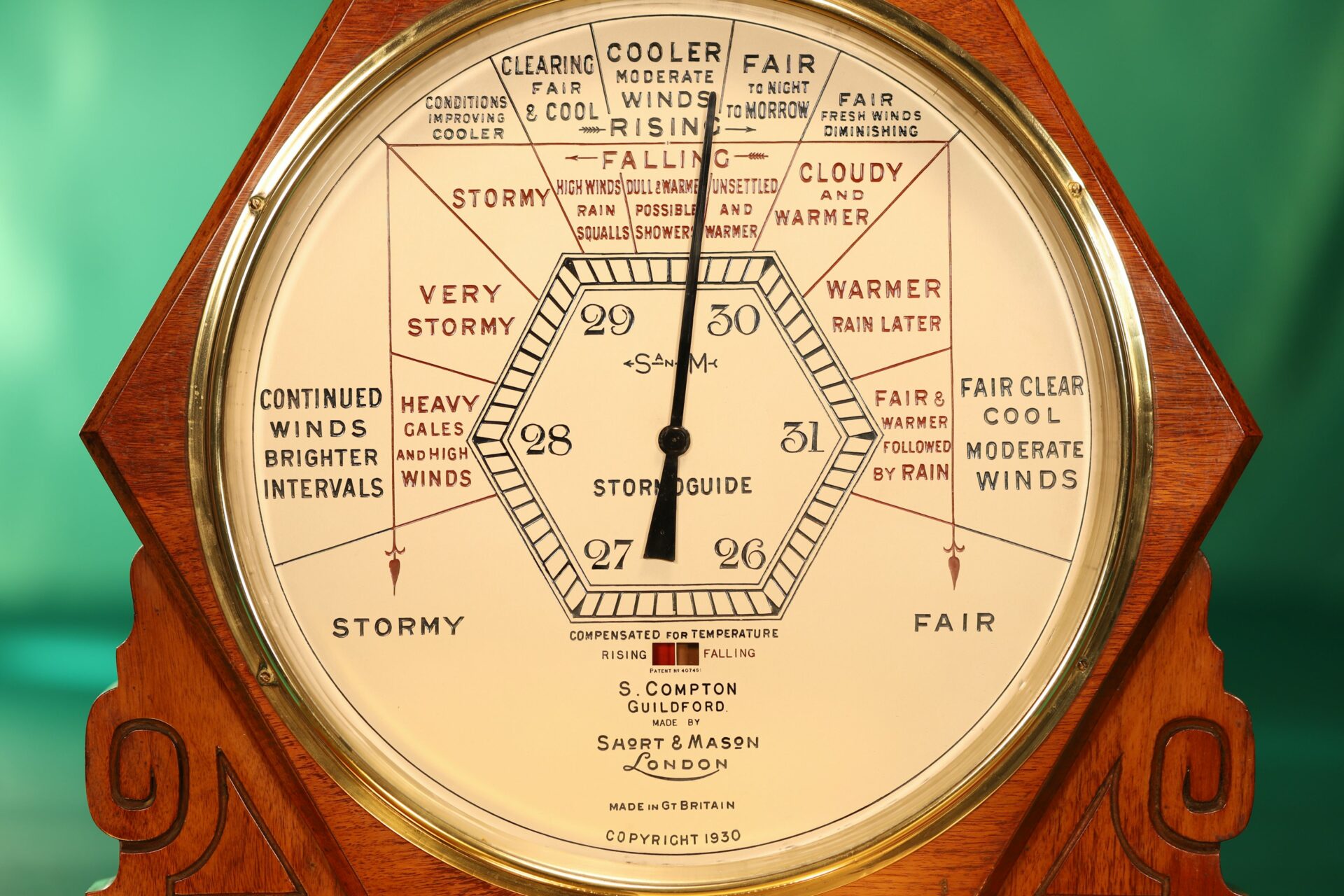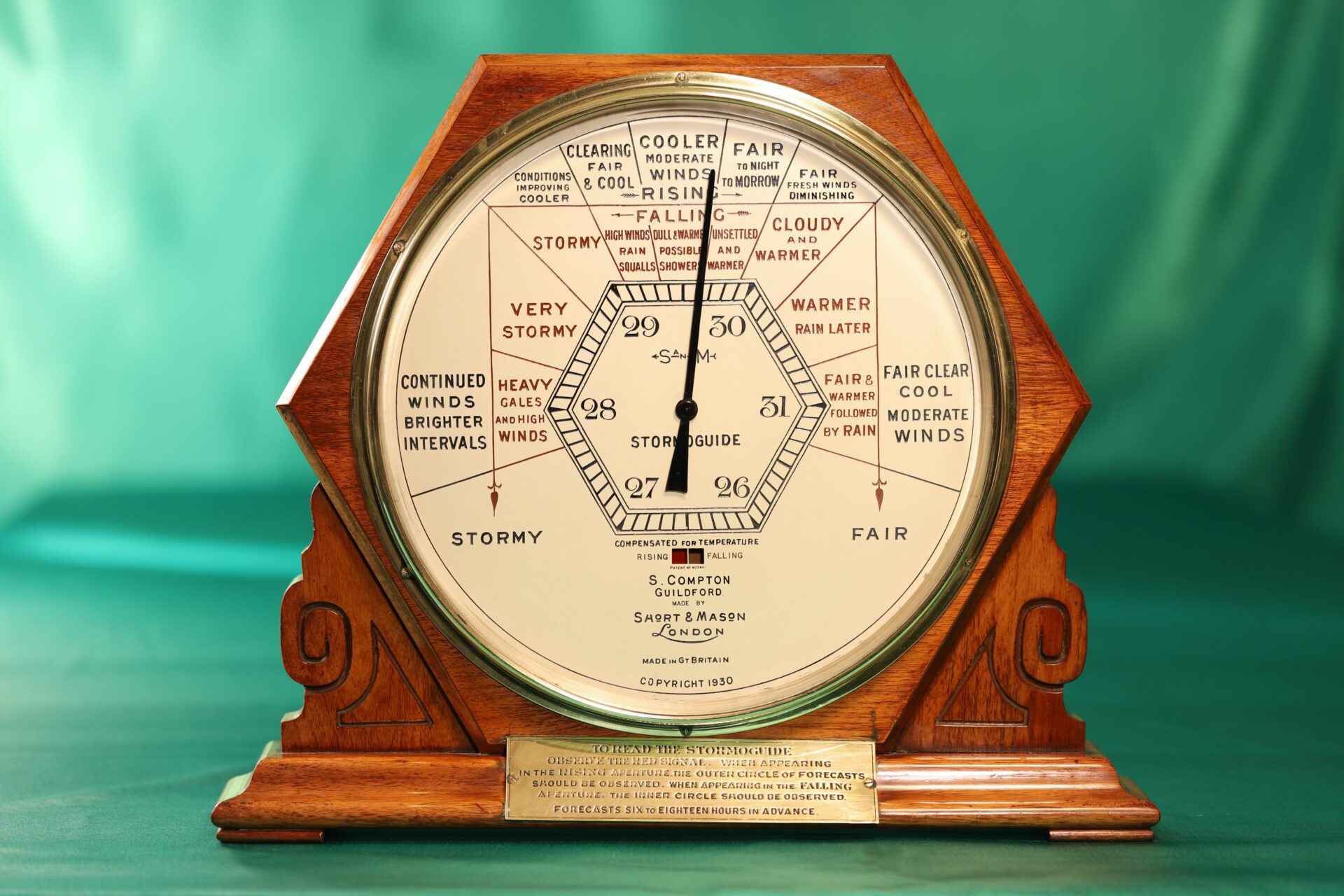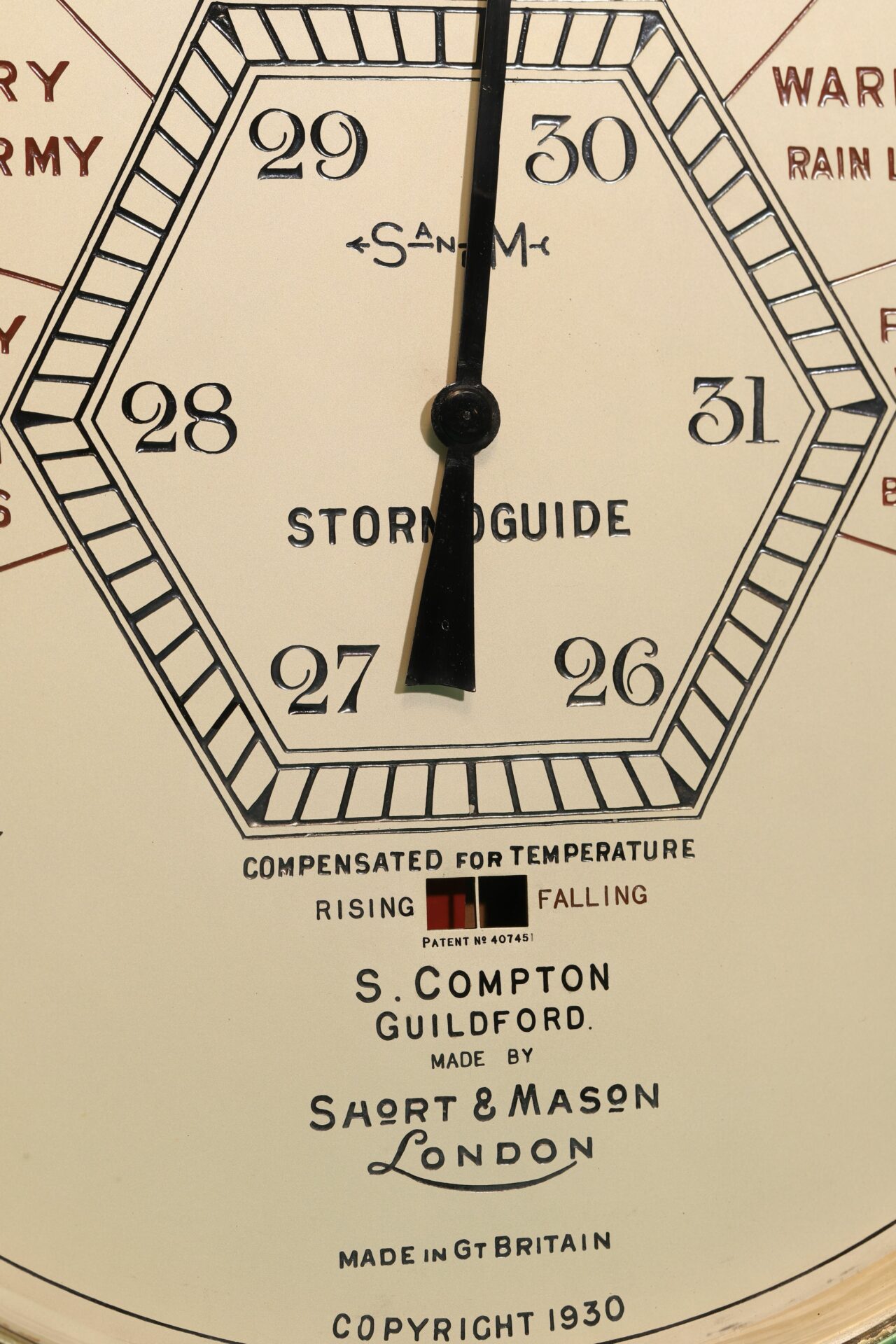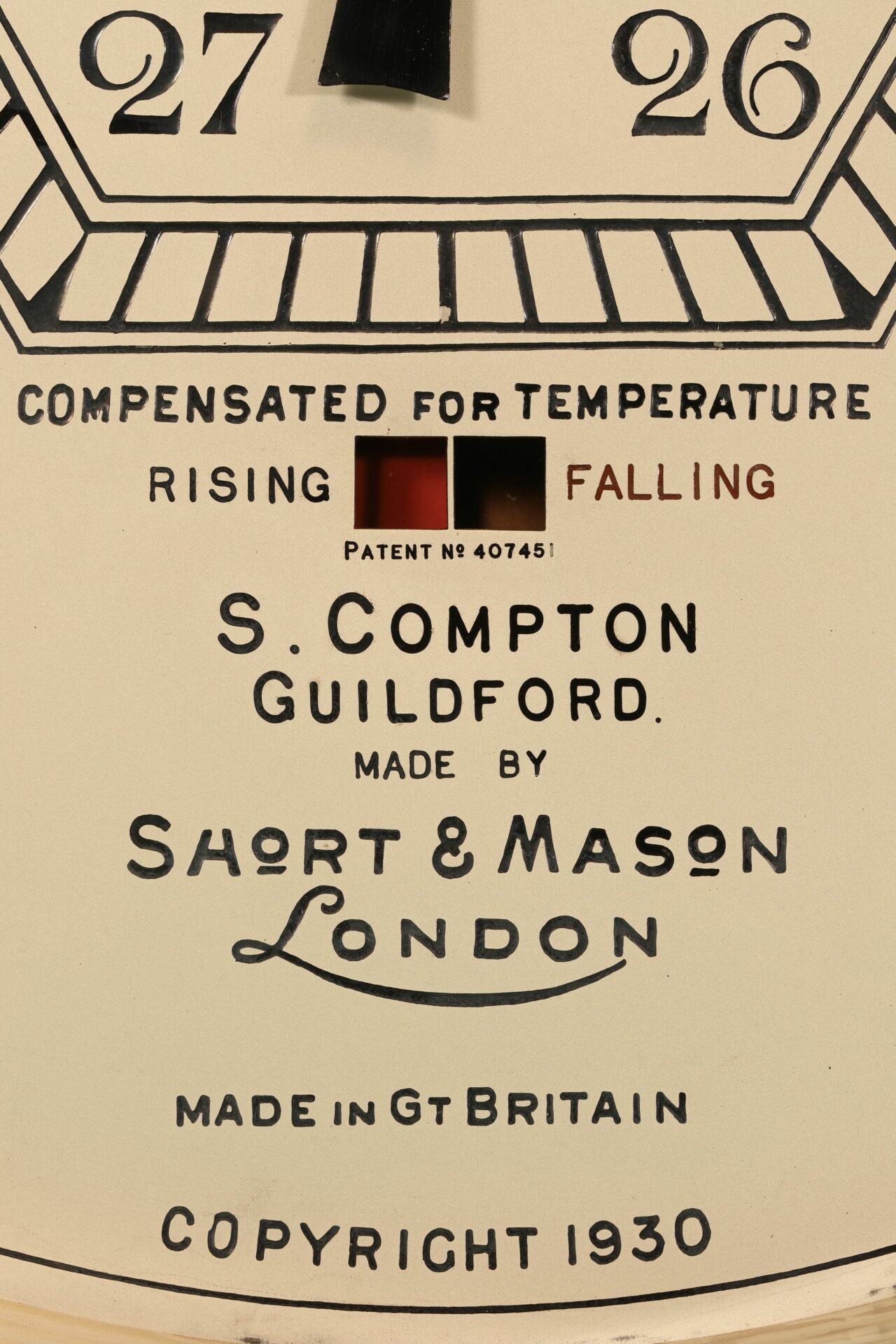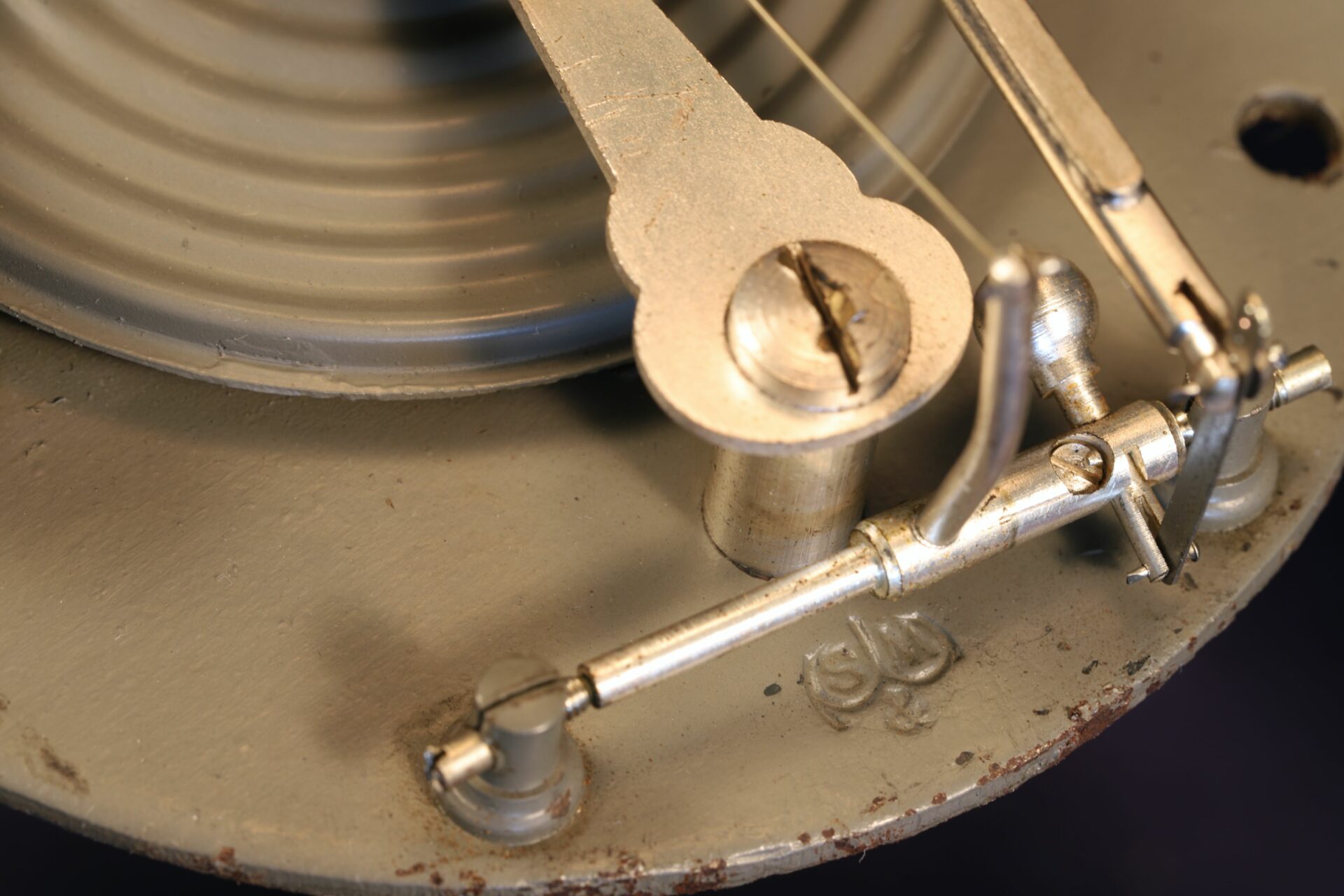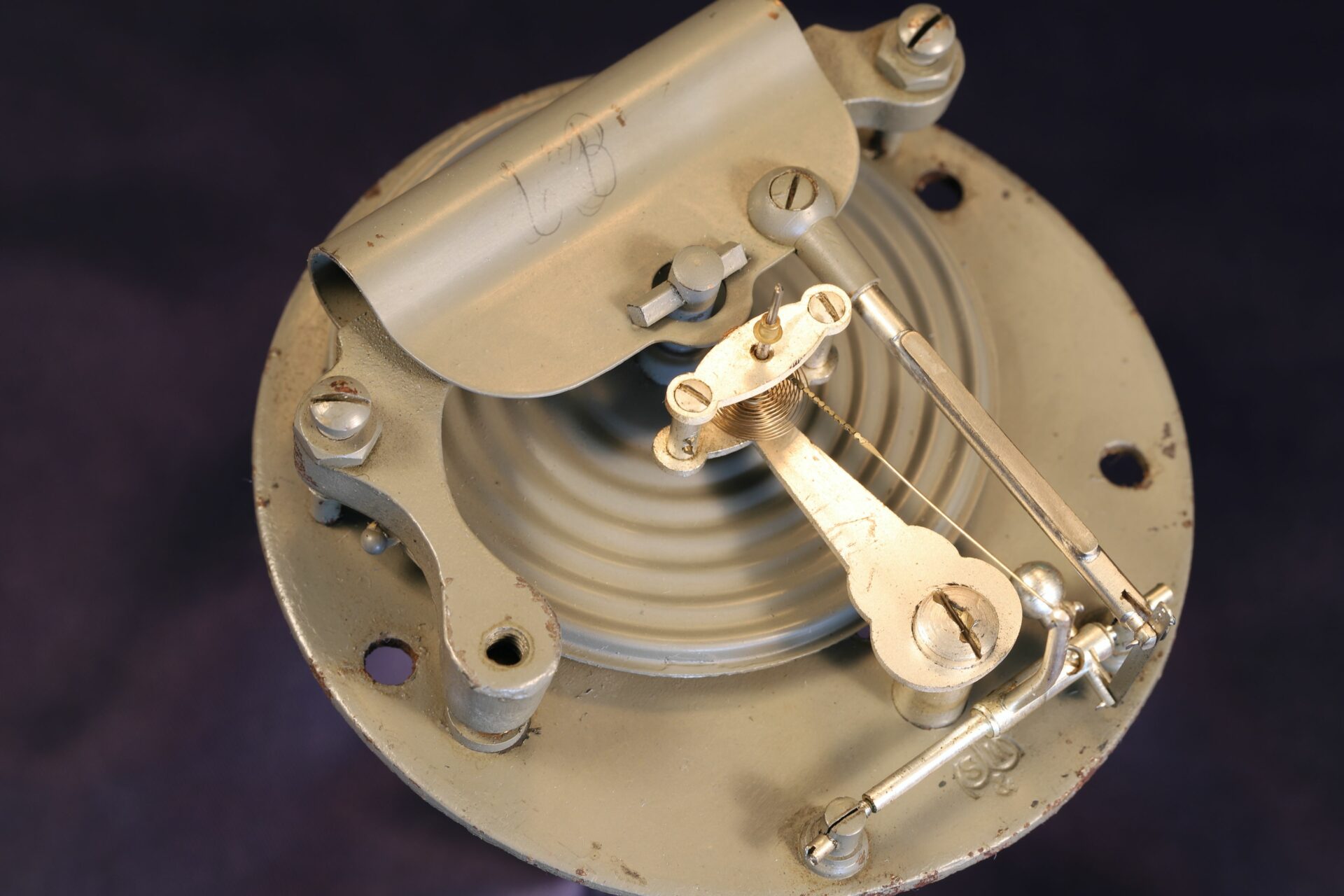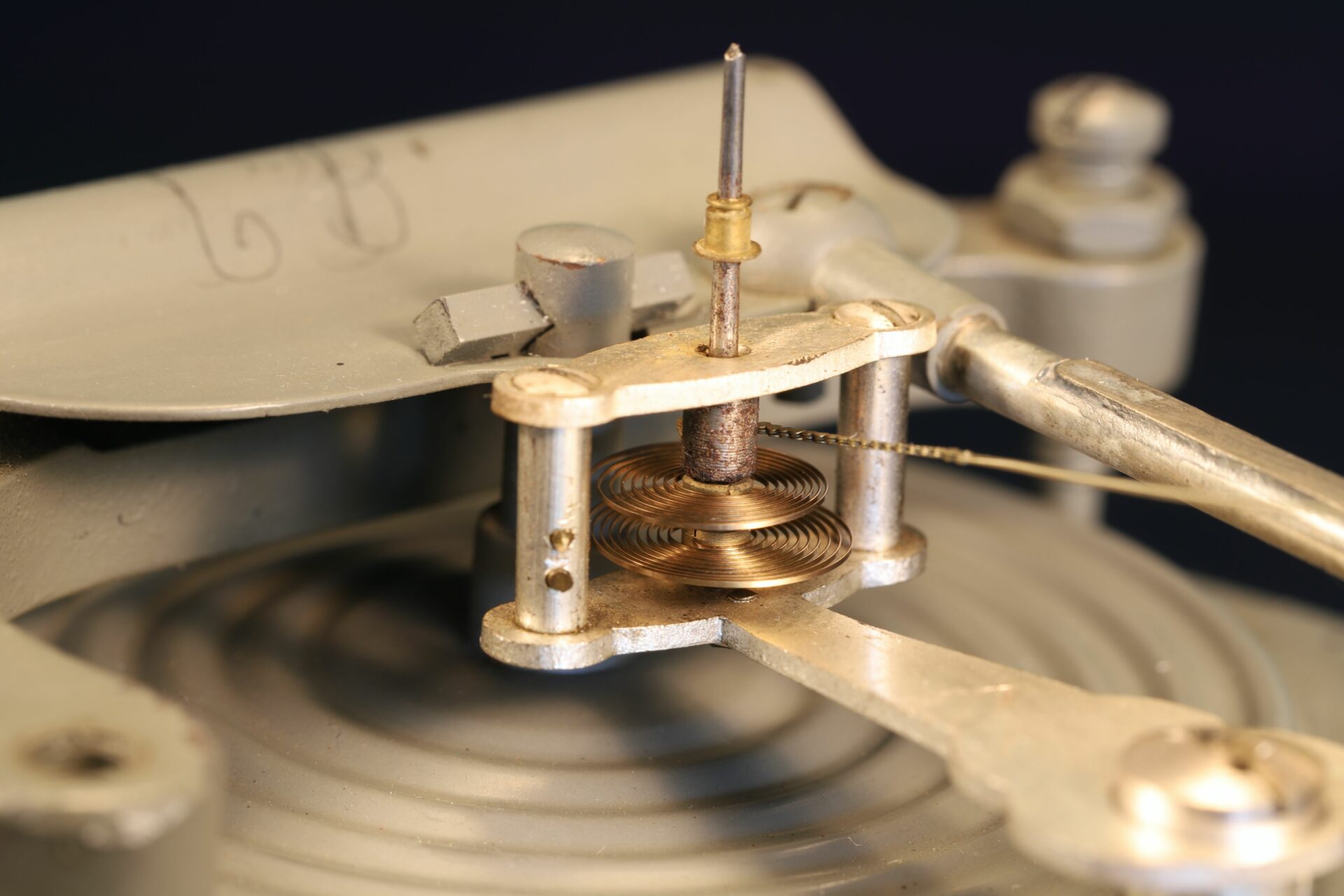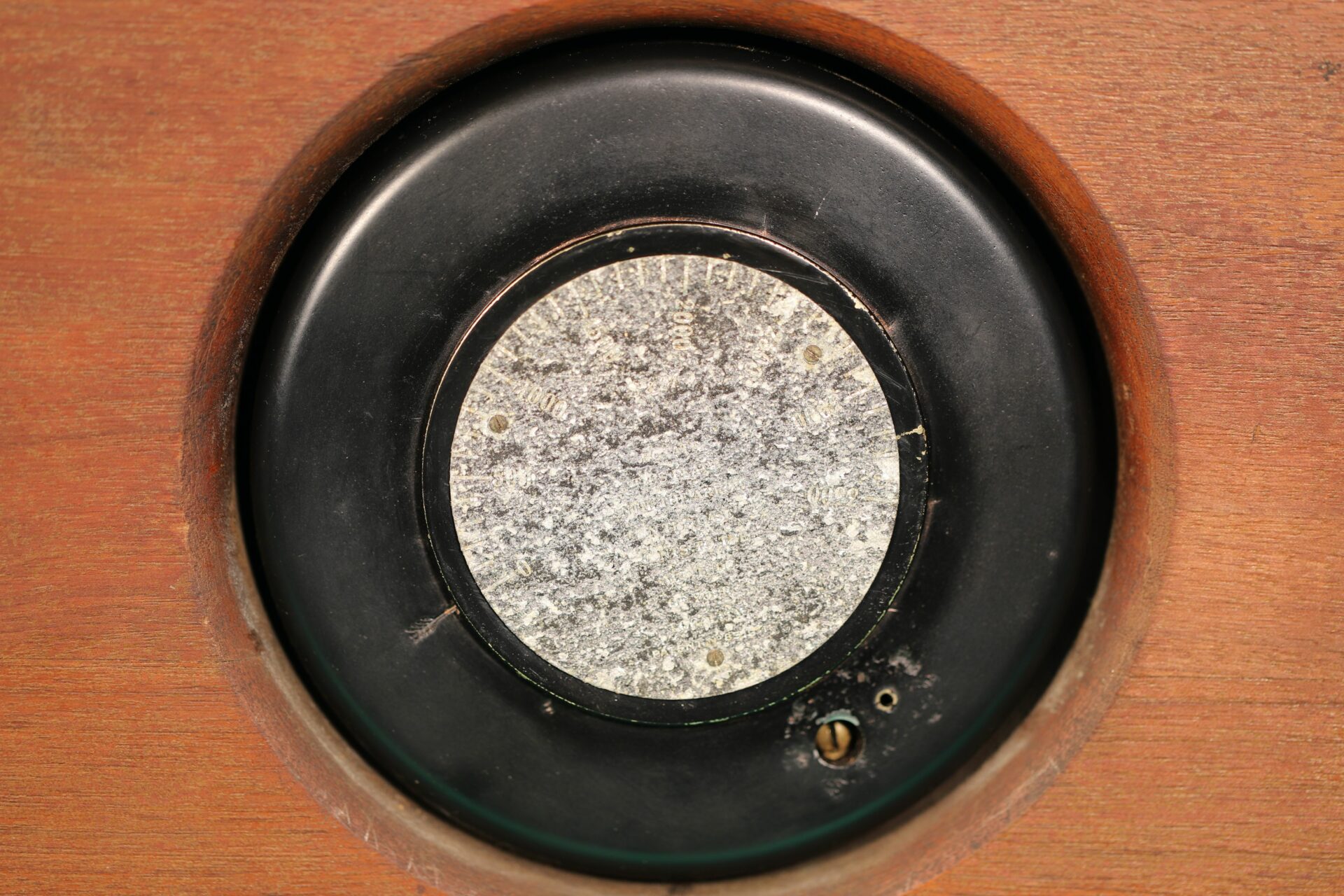Rare Large Display Stormoguide Barometer by Short & Mason c1935 – SOLD
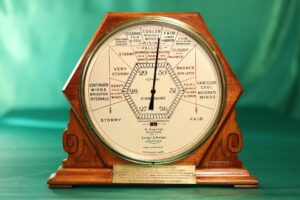 Aneroid Stormoguide barometer having 12″ silvered and part die-struck part hand-engraved dial, copiously annotated in red wax for prognostications based on falling pressure and black wax for rising pressure forecasts, the centre with barometric scale with a range from 26 – 31 inches of mercury, the upper part with Short & Mason “S & M” logogram and with “Stormoguide” below. The lower outer dial with twin square apertures for pressure trend indicator (Patent No. 407451), marked “Compensated for Temperature,” “S. Compton, Guildford,” “Made by Short & Mason, London,” Made In Great Britain” and “Copyright 1930.” Japanned aluminium counterbalanced pointer. Substantial bevelled glass set in a polished brass bezel. Conventional heavy duty 2” capsule driven movement tensioned on a C spring, the arbor with twin bronze counter springs, the chassis struck with Short & Mason logo.
Aneroid Stormoguide barometer having 12″ silvered and part die-struck part hand-engraved dial, copiously annotated in red wax for prognostications based on falling pressure and black wax for rising pressure forecasts, the centre with barometric scale with a range from 26 – 31 inches of mercury, the upper part with Short & Mason “S & M” logogram and with “Stormoguide” below. The lower outer dial with twin square apertures for pressure trend indicator (Patent No. 407451), marked “Compensated for Temperature,” “S. Compton, Guildford,” “Made by Short & Mason, London,” Made In Great Britain” and “Copyright 1930.” Japanned aluminium counterbalanced pointer. Substantial bevelled glass set in a polished brass bezel. Conventional heavy duty 2” capsule driven movement tensioned on a C spring, the arbor with twin bronze counter springs, the chassis struck with Short & Mason logo.
All set within a typical Art Deco hexagonal mahogany stand having scrolled side panels, the verso marked with no. “2550” with visible movement case, having calibration port and aluminium disc with altitude corrections. The plinth with brass instruction plate.
Generally very crisp, the timber case with some fading and losses but retaining a very high proportion of its original lacquered finish. The brass work lacking any original lacquer, this having been polished away, the colour and condition is good. The dial virtually blemish free, crisp and clean in appearance, some very slight marks mostly only visible in critical lighting. The altitude correction disc in poor condition.
This Stormoguide barometer has been the subject of a full overhaul, the movement and flag mechanism fully cleaned and serviced, the barometer re-calibrated and tested under laboratory conditions, see performance chart below.
These large timber-cased instruments are nearly always badly affected by timber shrinkage across the grain – this in turn can have a very prejudicial effect on the function of the barometer as the dial almost always becomes eccentrically aligned with the movement. This means completely re-setting the positions of dial and movement relative to each other. In instruments without altitude adjusting mechanisms this is quite straightforward, but where the whole movement is rotated within the case to compensate for altitude it is considerably more problematical and time consuming. In most cases, this function does not operate as the lubricant dries out and the parts become rusted together. In this respect this instrument operates perfectly.
This instrument has been properly set up in order that all functions operate correctly. The barometer records pressure across the full scale with very acceptable accuracy. The flag mechanism quickly responding to a fall or rise in pressure. The instrument may, by rotating the movement, be set to read the correct sea level pressure at altitudes up to 3,000’ – this is achieved by simply rotating the back of the instrument within the timber case.
The novelty pressure trend indicating flag operates on a low friction principle. It is deflected one way or the other as the pointer moves either clockwise or counter-clockwise – very often these jam or severely impede the movement of the pointer.
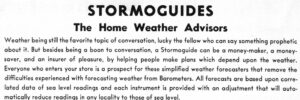 These imposing instruments are very desirable: they reflect very much the Deco theme in design, and the exceptionally large size of the barometer makes it a very visual piece within the home, an interior designer’s dream. Some were used as shop window accessories, but they were available to all to purchase and might have been seen in many institutions, hotels, large houses and company board rooms.
These imposing instruments are very desirable: they reflect very much the Deco theme in design, and the exceptionally large size of the barometer makes it a very visual piece within the home, an interior designer’s dream. Some were used as shop window accessories, but they were available to all to purchase and might have been seen in many institutions, hotels, large houses and company board rooms.
From a historical perspective, this was Short & Mason’s answer to the worldwide success of Negretti & Zambra’s weather forecasters and other forecasting devices. In reality, these instruments were released onto the market just too late as the BBC commenced transmitting weather forecasts in 1925 and the chances were high that if you could afford one of these instruments you might also be able to afford a wireless.
A very scarce and striking instrument with high aesthetic value, very much a collector’s piece.
Dimensions: 15″ high x 18″ wide x 3″ deep
Stock No: BA1460
Price: SOLD
